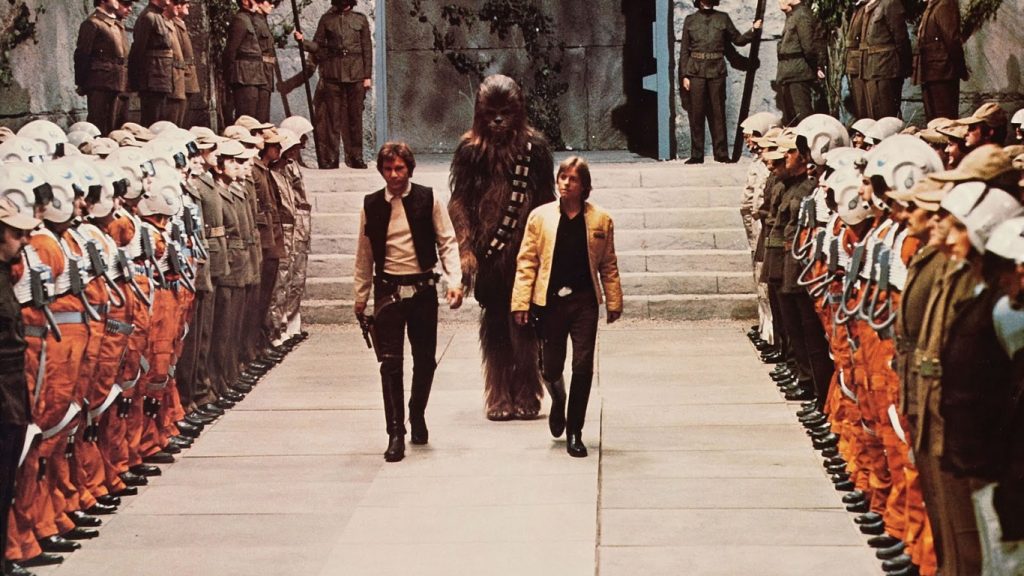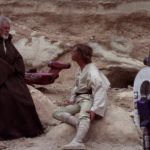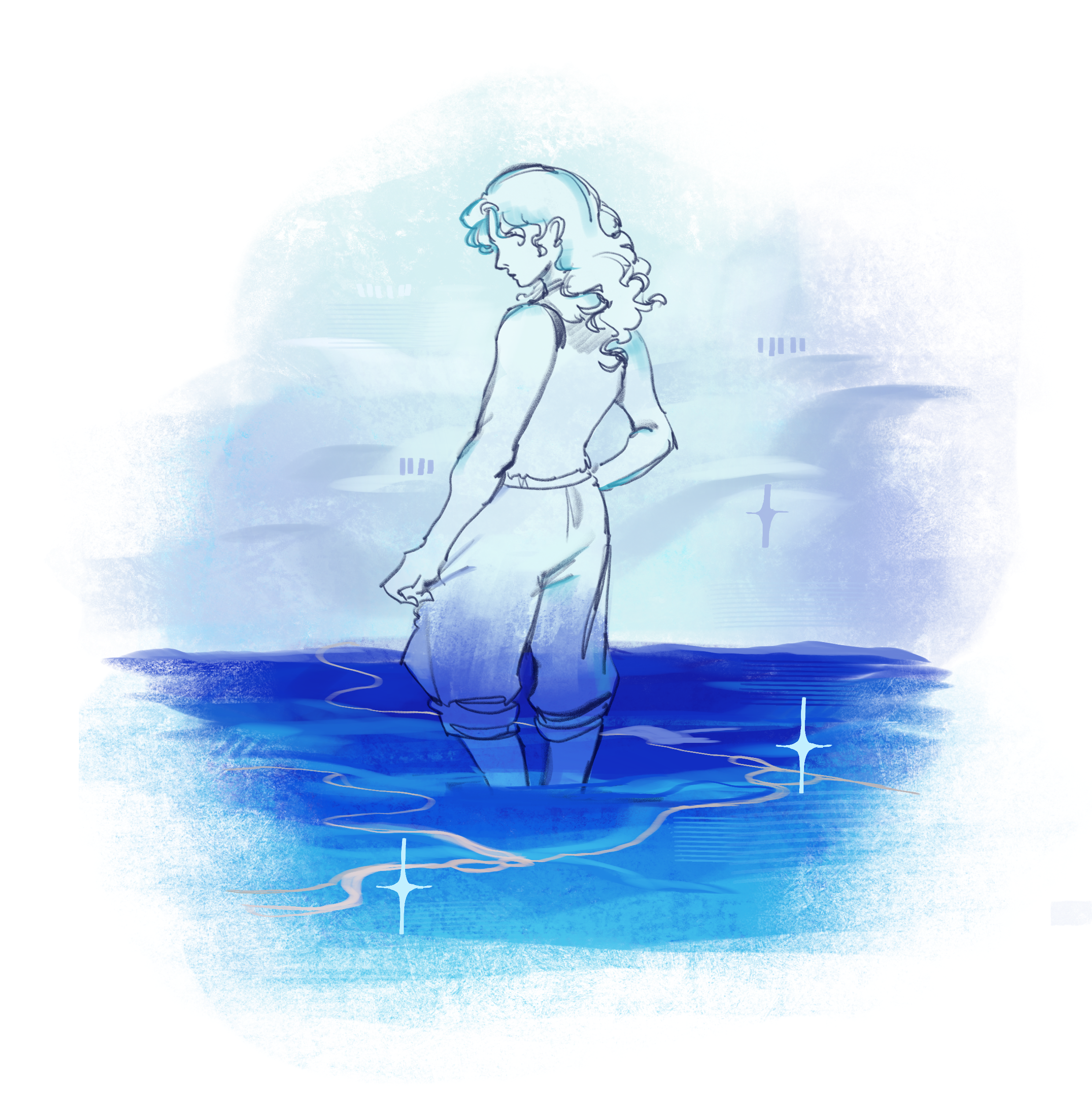The guiding principles behind Star Wars’ success…
Upon its release, ‘Star Wars: A New Hope’ became one of the most successful films in history. Its stars grossed millions. Through spin-offs, toys and merchandise, it’s Director George Lucas profited hugely.
‘Star Wars’ had universal appeal, and for good reason. It was a universal story, utilizing all the key attributes of story craft in order to form a tale that was dynamic, engrossing, and resonated with a worldwide audience.
Let’s look at the first film of this trilogy to unpick the reasons why so much went right, in a galaxy far, far away…
From base to superstructure
Throughout ‘A New Hope’, Lucas lays a solid structural foundation for Luke’s character development. This foundation can be traced back to the hero’s journey motif, uncovered by master story analyst, Joseph Cambell, the writer of the groundbreaking work on story: ‘The Hero with a Thousand Faces’.
For Campbell the hero’s journey represents the circlular trajectory a protagonist must travel. Through being sent to a new world, overcoming obstacles and aborbing archetypal energies, our hero returns to where he began. Only upon completion of this journey is he able to learn an inner truth and grow in the process.
It is in unlocking this circular story form and the sixteen steps that come with it, that we can begin to understand the universal appeal that so mesmerized audiences upon ‘A New Hope’s’ release.
The Sixteen Steps to Luke’s Journey
1. The Ordinary World
This is the normal world our protagonist inhabits. For Luke: the boredom of his desert home in Tattoine. Luke spends his days messing about with rambunctious friends and doing chores for his parents.
https://www.youtube.com/watch?v=pUaxXsqGeFI
2. The Call to Adventure
An outside force, in the form of the herald archetype (one who calls the hero to action), wills our hero out of their slumber to the adventure of their lives. In ‘A New Hope’ our herald is Obi Wan Kenobi. He wills Luke to leave his home of Tattoine and join him on a mission to save princess Leia.
see above video
3. Refusal of the call
Protagonists are often reluctant to accept the call to adventure. This is the case with Luke, who tells Obi Wan he must stay. But this refusal lasts only until…
https://www.youtube.com/watch?v=BTKHZN8c2L8
4. Crossing the first threshold
This is the story’s first point of no return. The protagonist is incapable of going back to their old life, subsequently they are willed to adventure. When Luke discovers his adoptive family’s murder by the stormtroopers, he realizes his only path now is to join Obi Wan to save Leia.
https://www.youtube.com/watch?v=g6PDcBhODqo
5. Tests, allies and enemies
Often the crossing of the first threshold is met with a bar scene- as evident in the Cantina scene in star wars. The bar serves as a literal ‘watering hole’ where our protagonist is thrust into a new world stacked full of enemies and dangerous situations. But there are also allies to befreind- such as the daring Han Solo and his endearing sidekick Chewbacca.
https://www.youtube.com/watch?v=JGp_5gOww0E
6. Approach to the inmost cave
This is the ‘approach’ phase of the story- where our hero goes directly to he antagonistic force to fight. This is manifested in ‘A New Hope’ in the Millenium Falcon’s journey to the imposing Death Star to save the imprisoned Leia. Here our protagnoist is putting his life on the line all in the pursuit of his goal. Thus the hero’s journey is fuelled further.
https://www.youtube.com/watch?v=sq51w34Hg9I
7. Meeting of the shadow self
The protagonist meets with the darkest incarnation of his true inner nature. Luke sees Vader slay his mentor Obi Wan. This is a confrontation of conflicting fatherly energies; as Obi Wan is cut down and vanishes, we are led to ask ourselves the question- will Luke end up turning out like Obi Wan, or like Vader?
8. Ordeal
This is where the story rapidly ramps up in pace and power, by presenting our character with imminent danger. Here this is seen in Luke, Leia, Han and Chewbacca being stuck in the Death Star’s garbage chute and struggling desperately to survive.
https://www.youtube.com/watch?v=T_OSeRxhGOY
9. Ultimate boon
The reward the hero obtains for passing the ordeal. For Luke this is seen in his and his groups’ escaping from the Death Star through great teamwork. In turn the team grows in strength and connection.
10. Crossing the Second threshold
Our heroes leaving to the rebel base- a place that will launch the team’s main counterattack on the empire.
11. Refusal of the return
This concerns a protagonist’s hesitancy in regards to confronting the antagonistic force. This is present in Han’s decision to not help with the death star attack, leaving the alliance, and his friends, heavily disappointed.
https://www.youtube.com/watch?v=HX0or42hdBY
12. Dark night of the Soul
A moment of disillusionment for our protagonist. This manifests itself in ‘A New Hope’ through Luke and the rebellion’s realization of the true power that the Death Star and, in turn, the empire holds.
See above video
13. Third threshold
The third primary point of no return. This is the rebellion’s ‘all or nothing’ attack on the Death Star. With the Star’s rays firmly directed on the rebel base for an imminent blast, it is only a matter of time before the dark side prevails.
https://www.youtube.com/watch?v=KuKqcfO31is
14. Catharsis
The showdown of the story. Luke speeds down the Death Star trench leading to its weak point. Behind Luke is Vader. Luke is a matter of shots away from death, or success. In line with John Truby’s findings in his “Anatomy of Story”, Lucas nails the spacial setup of his climax by creating the death star trench. By having Luke and Vader battle it out along this line, Lucas has his story down to one, cathartic point. Our senses are sharpened immeasurably. We wait with bated breath…
See above video
15. Ressurection
Luke fails to strike the Death Star with his initial shots. Time ticks away before the destruction of the alliance. It is only until Luke hears his mentor’s Obi Wan’s voice that our hero chooses to trust his instincts. Luke’s subsequent shot destroys the Death Star. Luke’s self belief is the force that defeats the darkness.
https://www.youtube.com/watch?v=iH6a1iYQ0GA
16. World dancer
The celebration stage at the culmination of our hero’s journey. This is a moment of great release. The audience is treated to the joy of having all the built up tension created throughout the story flow out. This is also a moment of reflection. The medals our hero’s recieve represents their valour, but also, their sacrifice. Luke returns to the ordinary world, but he has taken his journey’s reward with him- it’s lessons- to trust the force, and, in turn, himself.
From Jedi to journey
Cambell’s and in turn Lucas’ structure is so effective because it provides us with universal themes, motifs and images we all recognize. Through using the sixteen steps, Lucas taps into the baseline trajectory of any human journey.
Think of a journey you have undertaken: romantic, academic, athletic. You will experienced many manifestations of the hero’s journey.
You will have recieved the call to adventure; a shared glance with a crush, the beginning of the fateful exam period, being enlisted in the first team for football.
Often comes a refusal- a hesitancy; from work, from bravery, from grit. Our journeys will be stacked with ordeals, meetings of our shadow selves and approaches towards our inmost cave.
But through catharsis and resurrection we prevail. Spousal, sporting and studious success, takes us to a new level of being. This is a level that could only be achieved through sacrifice, determination and, most importantly, finding an inner truth.
This is the circular structure of our journey’s that Lucas has captured so well. Like Luke, we start with ourselves, we change, we end with ourselves. The change represents movement. Both beginning and end represent old and new versions of who we are- but they remain, resolutely, us.
From Luke to Lucas
This is why the Luke at the end of ‘A New Hope’ is both similar and distinct from the Luke that began his intergalactic journey. By learning about himself through the force, Luke is able to change and become the hero; but the thing he searched for and obtained was inside him all along.
Luke means ‘light giving’. Whilst ‘light’ is clearest in its connotation, ‘giving’ is equally as important to what Luke embodies. By shedding light on Luke’s journey, Lucas gives us the opportunity to do the same to our own lives.
Mythic structure is so resonant because it provides us with a deeper understanding of human change. It’s power is revealed through connection; connection between viewer and creator, between viewer and viewer, and between the viewer and himself.
It is only upon uniting these three elements that the true power of mythic structure can fully be revealed. This is the power that has spurred stories on since humans first had the ability to communicate. This is the power that enables humans to work hard, go beyond themselves to connect, and in turn to shed light on the darkest of places.
For it’s not only in the giving of the light that we see good. It is also in realizing that we already had that light to begin with. Take no coincidence in the similarity between ‘Luke’ and ‘Lucas’: by providing us with the light of his story, Lucas has crafted a tale that not only resonates with humanity, but is most succesfully a reflection of who he truly is.
Gallery












